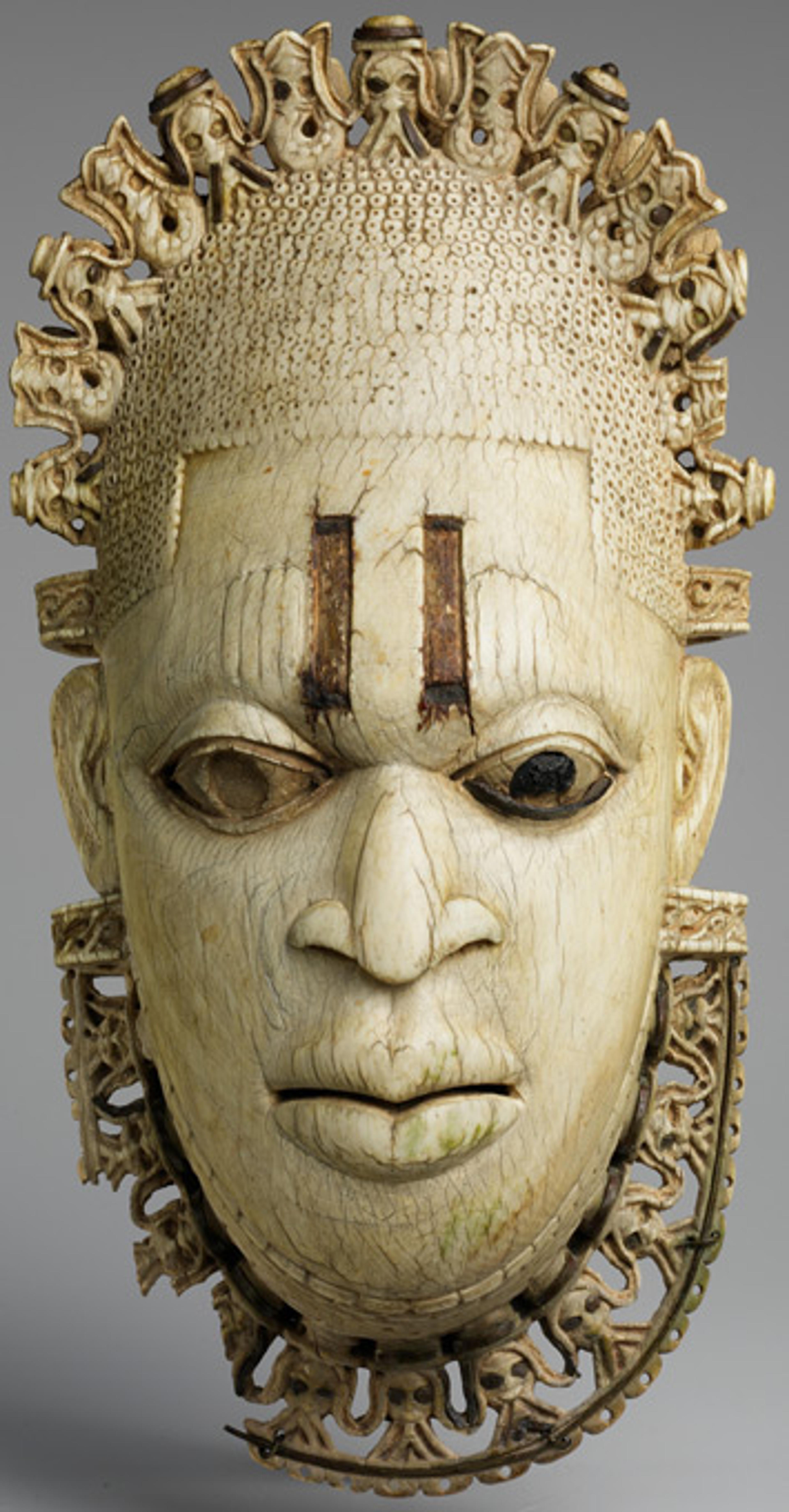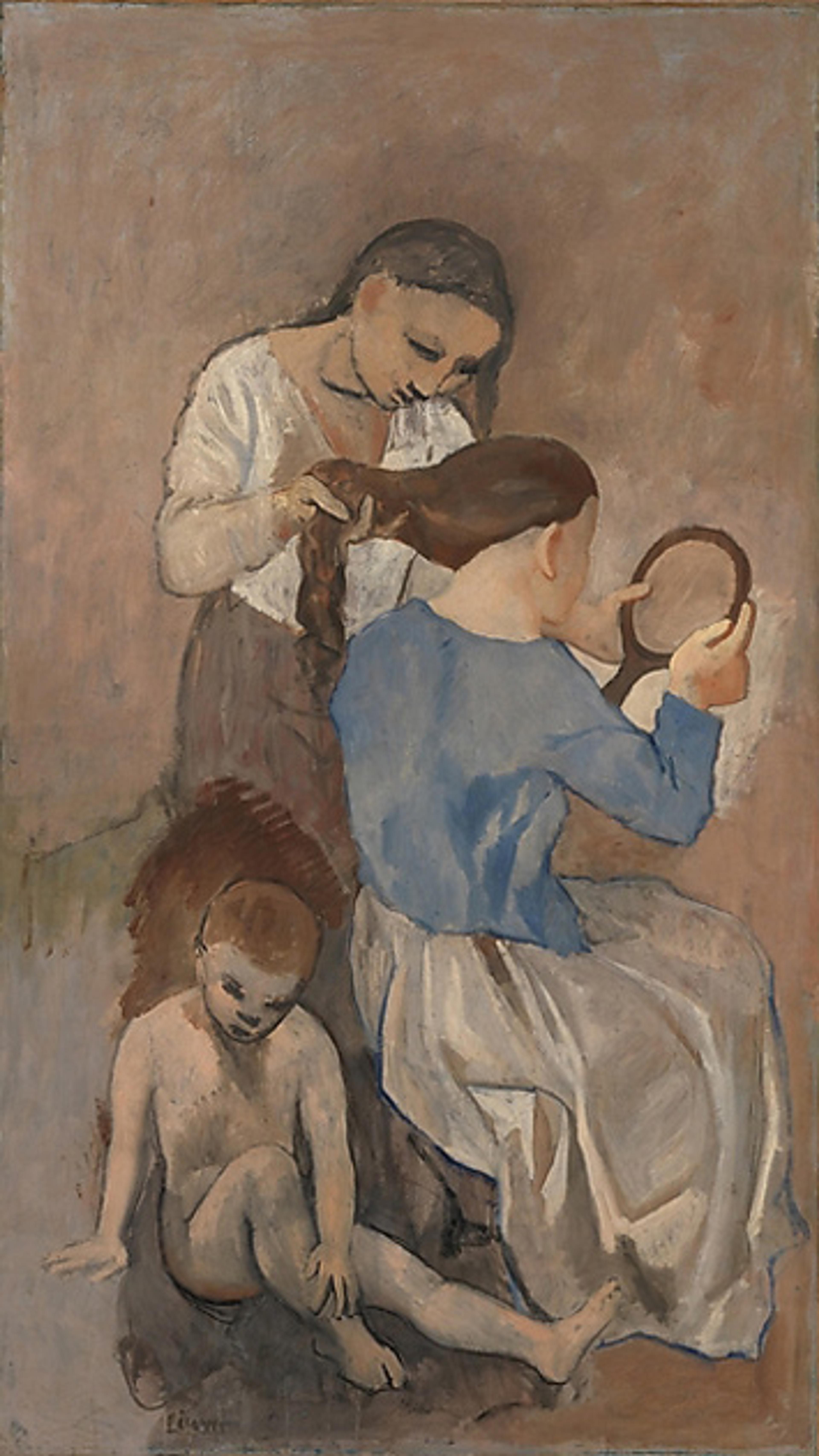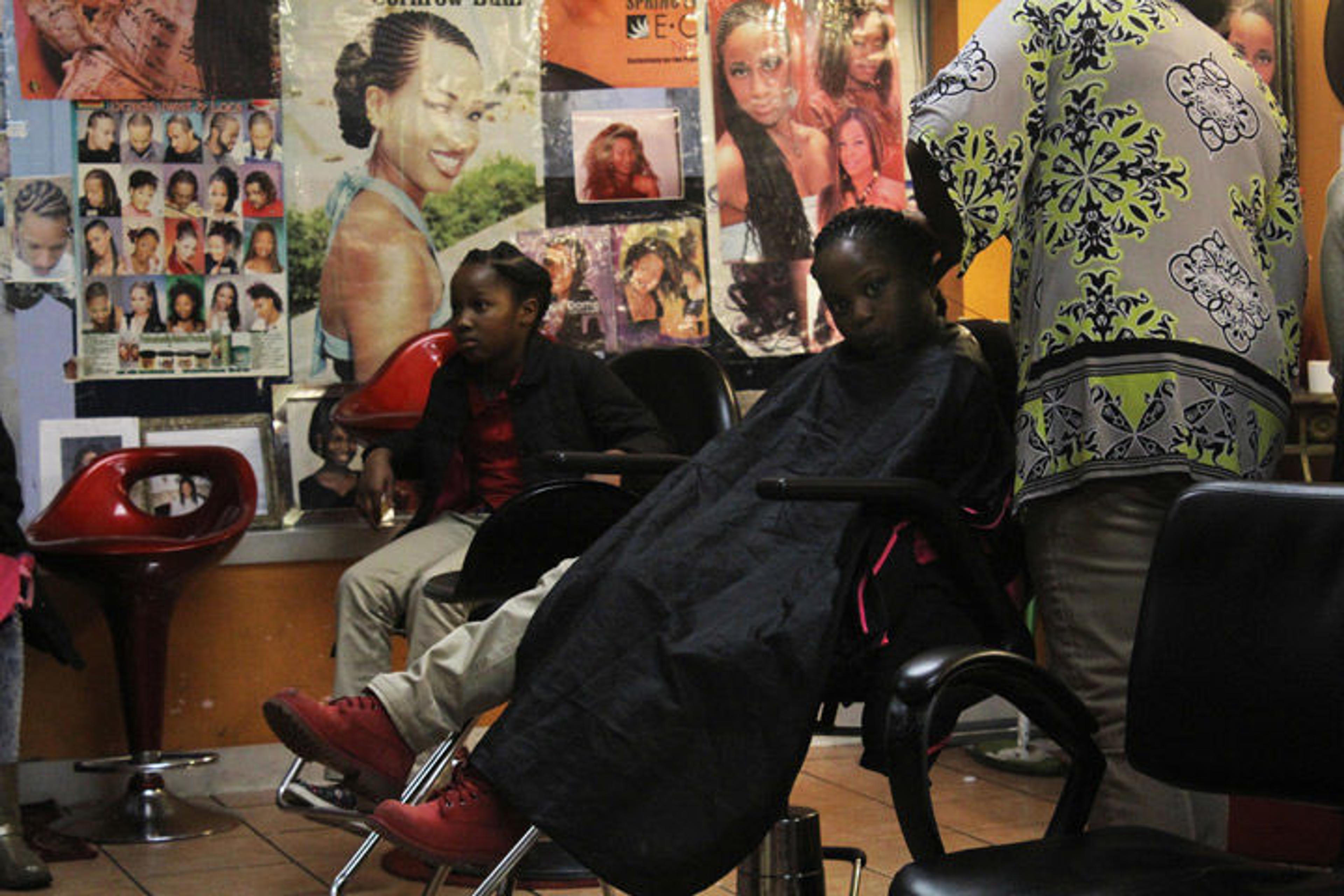
Johanna Obenda. Untitled, 2016
«When I was born the doctor exclaimed, "Wow, she needs a haircut already!" It's only fitting that some of my earliest childhood memories involve hair. I remember the fluffiness of the Minnie-Mouse-like, puff-ball ponytails I wore as toddler, and I recall the numbness I felt in my legs after sitting on the floor for hours in African braiding shops. As I grew through my adolescence, my hair transitioned with me, each phase accompanied by a specific style. There was the age of the braids, the period marked by the dreaded relaxer, the brief stint with the weave, the time of the flat iron, the dip into the world of dye, and, finally, the era of the natural hair. You name it, I tried it. I dedicated hours upon hours to my hair, so it is not surprising that I became interested in its function and significance.»
When I entered university, my fascination with hair reached beyond my own head. I began to explore the roles hair has played in society. In my academic research, I studied the connection between the depictions of hair in runaway slave advertisements and the development of colonial American identity. In my personal photography, I focus on hair in many of my shots. While hair was rarely the center of my studies and artistic endeavors, I found myself gravitating toward it when opportunities arose. In this sense, maybe it is not unexpected that I sought out hair in art at The Met.
As part of The Met's Museum Seminar (MuSe) Internship Program, my fellow interns and I developed our very own guided tours. During the first two weeks of our internship, Education Department staff trained us on gallery teaching. We were then given the freedom to create nontraditional tours that centered on a theme of our choosing. I took this chance to explore the presence of hair in The Met collection. I'm about halfway through my 12-month internship, and I've gotten the chance to talk about the power of hair with a number of visitors. Now I can't wait to give you a virtual peek at my tour.

Our tour begins in the galleries of the Department of Arts of Africa, Oceania, and the Americas in front of the Queen Mother Pendant Mask: Iyoba. A master carver created this mask in 16th-century Court of Benin (present-day Nigeria). The King, or Oba, Esigie commissioned this mask in honor of his mother Idia, who was referred to as the queen mother, or iyoba. Idia held significant political power during her son's rule and was known to some as the "hidden oba." This type of political influence was uncommon for women at that time. Through this pendant mask, Oba Esigie memorialized his mother's power and guidance.
Left: Queen Mother Pendant Mask: Iyoba, 16th Century. Nigeria, Court of Benin. Edo peoples. Ivory, iron, copper (?), H. 9 3/8 x W. 5 x D. 3 1/4 in. (23.8 x 12.7 x 8.3 cm). The Metropolitan Museum of Art, New York, The Michael C. Rockefeller Memorial Collection, Gift of Nelson A. Rockefeller, 1972 (1978.412.323)
Take a closer look at the details of Idia's headpiece. What stands out to you? Perhaps you notice the figures that look like small faces. Scholars believe that these figures depict Portuguese traders that came to Benin in the late 15th century. For the people of Benin, the Portuguese represented a source of wealth, as the trade and weaponry they brought to the area led to the kingdom's territorial expansion. Idia is credited with cementing this trade relationship between the Portuguese and the people of Benin.
Now what do you notice about the other figure next to the Portuguese merchant? I first thought it was an elephant (which would make sense because the mask is made from ivory), but the figure is actually a mudfish, an eel-like animal that lives on both land and water. Mudfish were culturally significant to the people of Benin because they represented royal divinity. Much like the mudfish had the ability to exist on both land and water, the king had the ability to exist both in the human realm and in the spiritual world. Why do you think the carver placed alternating images of wealthy Portuguese merchants and spiritually charged mudfish on Idia's hairpiece? What kind of statement could he have been trying to make? There are many different interpretations of the meaning behind Idia's headpiece. I see Idia's headpiece as a symbol of her power, both politically and spiritually. In my opinion, Idia's headpiece, and the mask in general, represents female empowerment in a patriarchal society because it depicts the acquisition of wealth, prestige, and even immortality.

As the tour continues, I'd like to bring you to Pablo Picasso's La Coiffure. Spend a minute or two looking at this painting. What catches your eye? Some people point out the lack of reflection in the mirror. Others are struck by the unnatural placement of the seated woman's hairline.
Right: Pablo Picasso (Spanish 1881–1973). La Coiffure, 1906. Oil on canvas, 68 7/8 x 39 1/4 in. (174.9 x 99.7 cm). The Metropolitan Museum of Art, New York, Wolfe Fund, 1951; acquired from The Museum of Modern Art, Anonymous Gift, 1953 (53.140.3) © 2017 Estate of Pablo Picasso / Artists Rights Society (ARS), New York
I typically ask visitors for their thoughts on the relationship between the three figures, and I am always surprised by the variety of answers. For some, the painting reminds them of a mother doing her daughter's hair. For others, there is nothing maternal about the relationship between the two women. They see the woman holding the hair as a sort of servant to the seated woman. One visitor described the three figures as three different life stages: we begin as the naked baby on the floor, progress to the seated woman getting her hair done, and, finally, become the standing woman taking care of the seated woman's hair. What do you think? To me, the relationship between the figures is similar to the relationships I've observed in various beauty salons. The standing woman is a hairdresser and the seated woman her client. The small boy is either the child of the hairstylist or one of her clients—his disinterested disposition stemming from hours spent in the salon. However, this was not the narrative that inspired Picasso to create La Coiffure. The painting is believed to be Picasso's interpretation of the Holy Family, inspired by Leonardo da Vinci's Virgin and Saint Anne.
My own experiences influenced my interpretation of La Coiffure. I found similarities to La Coiffure in a photo I took last spring in a Washington, D.C., beauty salon, both in its content and composition. There is power in our ability to bring our own experiences to a work of art. Despite age or educational background, our unique interpretation allows us to view art beyond its initial context and to place contemporary meaning to these works.

Johanna Obenda. Untitled, 2016
For many people, including myself, viewing art in a museum can be intimidating. I often wonder if I'm doing it right. Creating this tour has shown me that approaching art through a lens that interests me allows me to view art in ways I might neglect if I spend my time trying to see things in the "right" way. The Met collection is full of artworks that depict hair, and these depictions can be a great starting point for observing and interpreting art. My hope in sharing a portion of my tour is that you, too, can feel empowered to view art through whatever lens you find interesting.
I invite you to join my tour, Intern Insights Tour—The Power of Hair, on Tuesday, February 21, from 11:45 am to 12:45 pm at The Met Fifth Avenue so I can hear your thoughts and interpretations! Feel free to comment below if you can't make it to the Museum.
Related Event
Intern Insights Tour—The Power of Hair
Tuesday, February 21, 11:45 am–12:45 pm
The Met Fifth Avenue - Gallery 534 (Vélez Blanco Patio)
Free with Museum admission